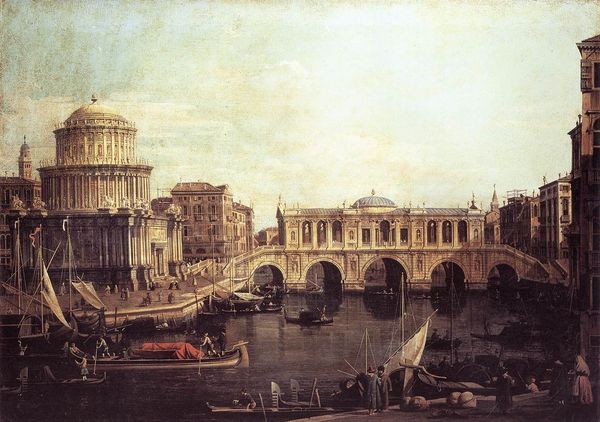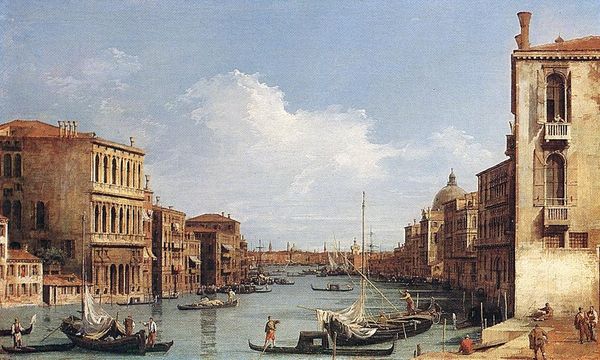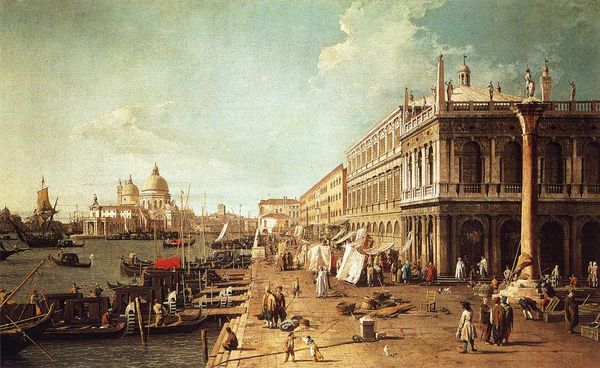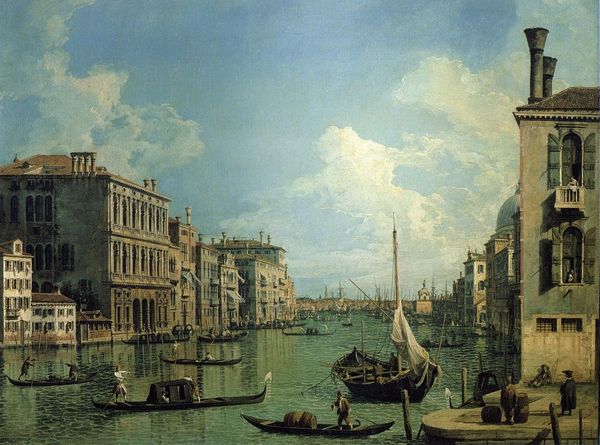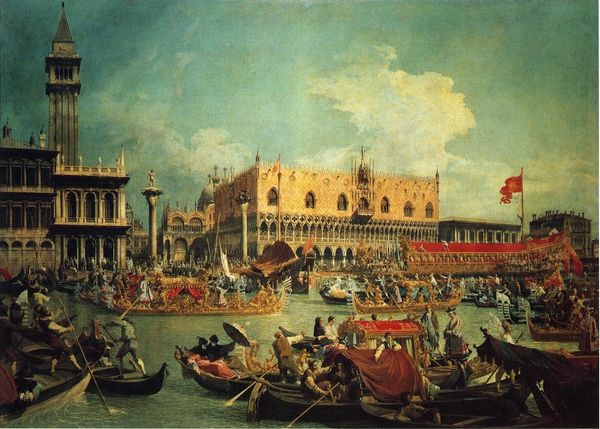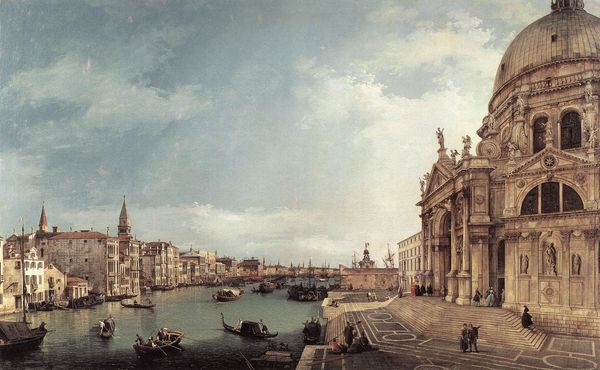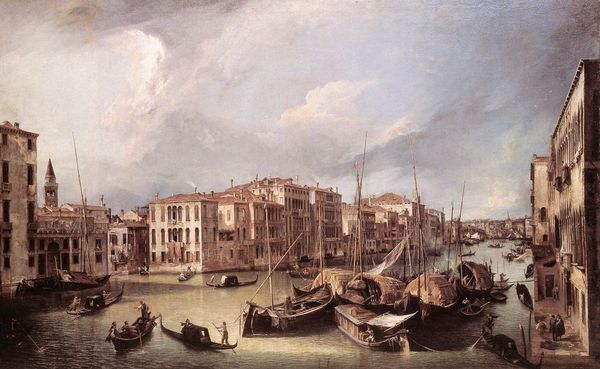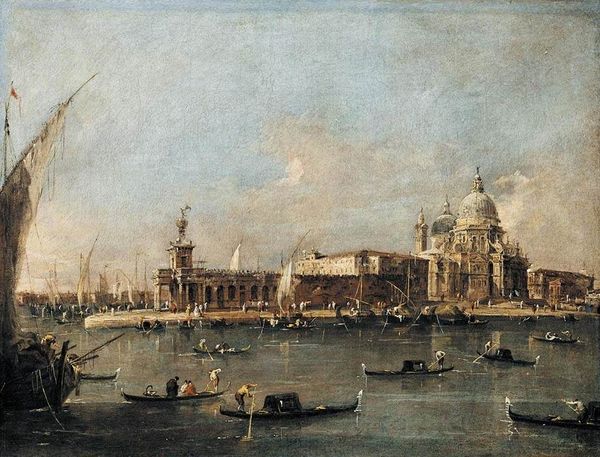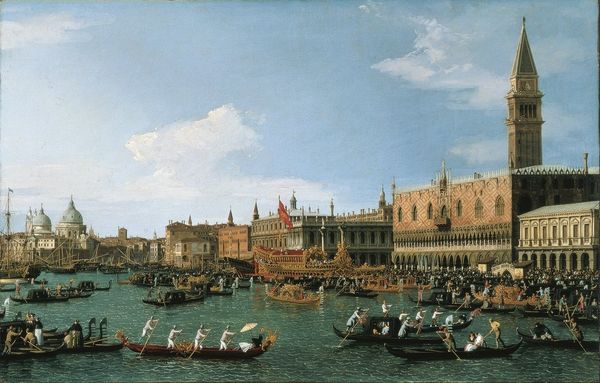
Basilica di Vecenza and the Ponte de Rialto 1744
0:00
0:00
canaletto
Parma National Gallery, Parma, Italy
painting, oil-paint, architecture
#
venetian-painting
#
baroque
#
painting
#
oil-paint
#
sculpture
#
landscape
#
holy-places
#
perspective
#
water
#
cityscape
#
watercolor
#
architecture
Copyright: Public domain
Editor: Here we have Canaletto’s “Basilica di Vicenza and the Ponte de Rialto,” created in 1744 using oil paint. The clarity and detail are incredible. I'm struck by the light; it seems to define the forms themselves. What structural elements stand out to you? Curator: Note how the composition uses receding planes. The artist employs linear perspective rigorously to organize space. Observe, in particular, the mathematical precision with which Canaletto renders the architecture. It gives order. Do you see any deviations in form or technique? Editor: I see slight differences in detail across the piece, almost as if different levels of detail suggest relative importance. Why the emphasis on architectural form and spatial relations, when many contemporary artists leaned toward narrative or portraiture? Curator: In Canaletto’s meticulous cityscape, the architectural elements create rhythm. The arrangement creates a sense of equilibrium through carefully constructed visual intervals, even within the depiction of organic architectural elements. Are there formal dissonances to the symmetry that provide balance and guide interpretation? Editor: The bustling waterways create tension within the tranquil architecture. That’s fascinating! Curator: Indeed. It suggests dynamism beneath order. Editor: Thinking about the composition, it really feels like a stage. Thank you for highlighting the subtle interplay of order and tension! Curator: A fine observation; analyzing such relations deepens our understanding and engagement with visual structures.
Comments
No comments
Be the first to comment and join the conversation on the ultimate creative platform.
